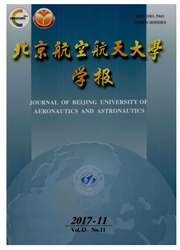

 中文摘要:
中文摘要:
传统方法解决大规模时序曲线的预测建模问题,需要对每条曲线逐一建模,使得建模工作量相当庞大,在实际应用中缺乏可操作性。文章提出一种解决此问题的新方法——曲线分类建模方法。该方法先减少曲线的模型种类,再进行曲线分类和分类建模,在尽可能保留原始信息的前提下较大程度地降低了建模的工作量。文章阐述了该方法的原理和计算过程,并以应用于多地区GDP曲线的预测案例说明该方法的实用性和有效性。
 英文摘要:
英文摘要:
Traditional approach to predictive modeling of large-scale sequential curves is to build model separately according to every curve, which causes heavy and complicated modeling work inevitably. Therefore the existing approach is lack of manipulation in the application. This paper proposes a new method to solve this problem. By reducing model types of curves, clustering curves and modeling by clusters, the new method simplifies modeling work to a large extent and reserves original information as much as possible in the meantime. This paper specifies the theory and algorithm, and applies it to predict GDP curves of multi-regions, which confirms practicability and validity of the presented approach.
 同期刊论文项目
同期刊论文项目
 同项目期刊论文
同项目期刊论文
 Equity and efficiency analysis of pricing strategies in a bi-modal network with heterogeneous user g
Equity and efficiency analysis of pricing strategies in a bi-modal network with heterogeneous user g Modeling the evolutions of day-to-day route choice and year-to-year ATIS adoption with stochastic us
Modeling the evolutions of day-to-day route choice and year-to-year ATIS adoption with stochastic us Modeling time-dependent travel choice problems in road networks with multiple user classes and multi
Modeling time-dependent travel choice problems in road networks with multiple user classes and multi One-step solution fabrication of magnetic chains consisting of jingle-bell-shaped cobalt mesospheres
One-step solution fabrication of magnetic chains consisting of jingle-bell-shaped cobalt mesospheres Support vector machine forecasting method improved by chaotic particle swarm optimization and its ap
Support vector machine forecasting method improved by chaotic particle swarm optimization and its ap Static floor field and exit choice for pedestrian evacuation in rooms with internal obstacles and mu
Static floor field and exit choice for pedestrian evacuation in rooms with internal obstacles and mu A model for evaluation of transport policies in multimodal n etworks with r oad and p arking capacit
A model for evaluation of transport policies in multimodal n etworks with r oad and p arking capacit 期刊信息
期刊信息
